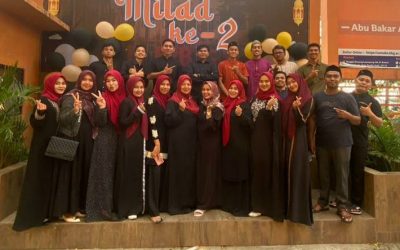 Source: https://id.m.wikipedia.org
Source: https://id.m.wikipedia.org
Pinto Aceh Motif: Cultural Heritage, Artistic Beauty, and Jewelry Innovation
Pinto Aceh, also known as the Pinto Aceh motif, has a history dating back to 1935. It represents a traditional work of art that fuses the culture and history of Aceh into traditional jewelry, enchanting women who have an affinity for jewelry, both within Aceh and among visitors from outside the region.
Historical accounts reveal that the inspiration for Pinto Aceh Motif can be traced back to a significant monument called Pinto Khop. This monument, a relic from the era of Sultan Iskandar Muda, stands as a distinctive symbol of Aceh. Its unique feature is its low height, which carries profound philosophical significance. Pinto Aceh, influenced by Pinto Khop, stands at an approximate height of 120-150 cm, requiring adults to bow when entering as a gesture of respect to the homeowner. Furthermore, traditional Acehnese houses, referred to as “Rumoh Aceh,” typically feature separate entrances for men and women, especially during traditional ceremonies. This custom reflects a culture of respect and strong cultural norms within Acehnese society, where the preservation of traditions is of utmost importance.
Pinto Aceh also mirrors Acehnese cultural norms, where initial interactions may not always be open to strangers, but warm and friendly once mutual familiarity is established.
Pinto Aceh Motif, emerging in 1935, rapidly gained popularity. In 1926, during the Dutch colonial era in Aceh, a Pasar Malam (Night Market) event took place in Kutaraja (now Banda Aceh). This event featured a jewelry exhibition showcasing the work of gold and silver craftsmen from across Aceh, sparking intense competition. One of the standout winners was Mahmud Ibrahim, a goldsmith from Blang Oi. This recognition transformed his life and made him renowned throughout the nation, leading many officials, dignitaries, and the affluent to commission jewelry made by his skilled hands.
In 1935, a Dutch official in Banda Aceh ordered a special brooch for his wife, with the design inspired by Pinto Khop, the historical monument that served as the foundation for the Pinto Aceh motif. Pinto Khop, originally the back door of the Aceh Sultanate’s palace, was exclusively used by Sultan Iskandar Muda’s queen and her attendants when they went to bathe by the Daroy River.
Pinto Aceh Motif, initially featured only on chest brooches, evolved over time and found its way onto various types of jewelry, including hairpins, hair clasps, bracelets, earrings, rings, and even necktie pins, all ornamented with the Pinto Aceh motif.
Despite being relatively young in the history of Acehnese traditional jewelry, at only about 60 years old, this motif has secured a special place in the legacy of traditional Acehnese jewelry, which has been in existence for centuries. Today, Pinto Aceh Motif isn’t just an integral part of Acehnese jewelry culture; it also stands as a significant symbol of Aceh’s rich cultural identity and heritage.
Over the years, the Pinto Aceh Motif has undergone transformations and innovations. Initially crafted in pure gold, symbolizing wealth, artists and craftsmen have adapted the motif into various art forms and materials, resulting in astonishing innovations in jewelry.
With its rich historical background, deep philosophical foundations, and stunning design, Pinto Aceh Motif represents a cultural heritage well worth exploring. It serves as a evidence to the idea that traditional art can continue to evolve, remaining a vital part of modern Acehnese culture and art. Through the fusion of history, art, and creativity, the Pinto Aceh Motif stands as a remarkable example of how culture and art can bridge the past and the present



